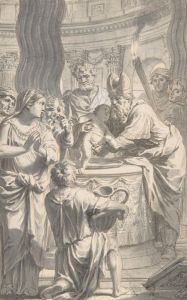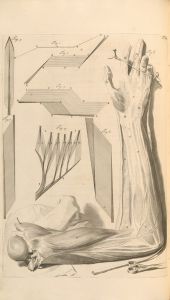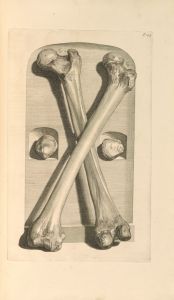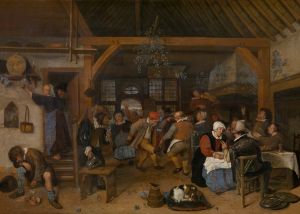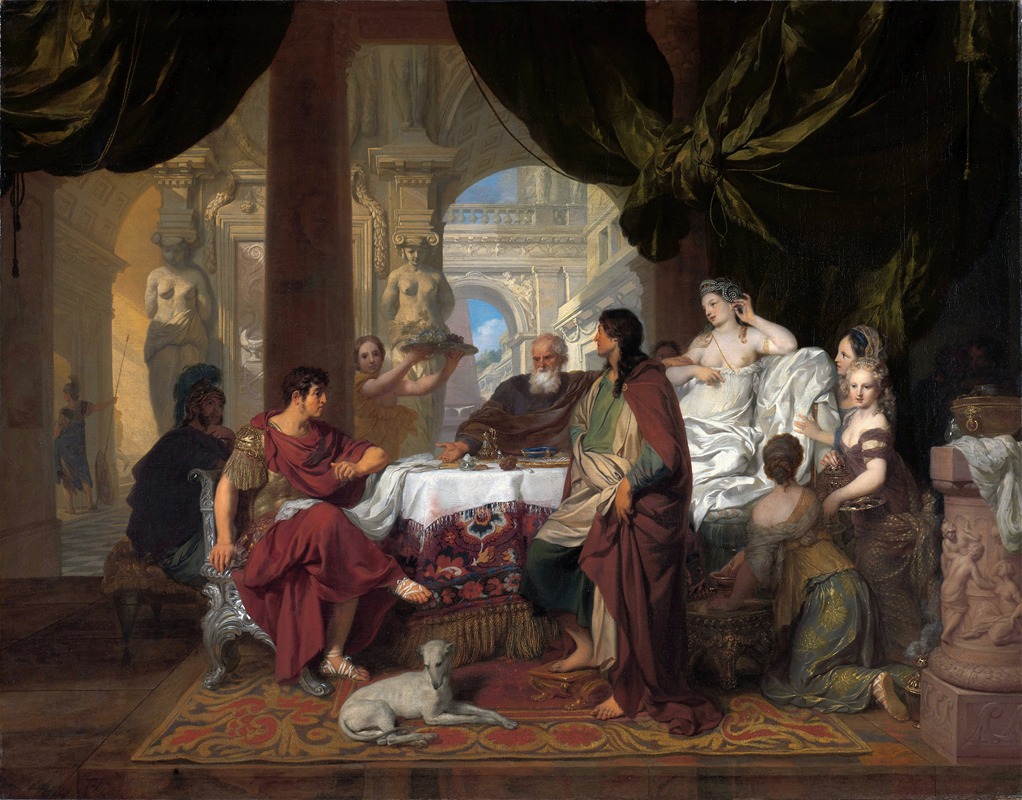
Cleopatra’s Banquet
A hand-painted replica of Gerard de Lairesse’s masterpiece Cleopatra’s Banquet, meticulously crafted by professional artists to capture the true essence of the original. Each piece is created with museum-quality canvas and rare mineral pigments, carefully painted by experienced artists with delicate brushstrokes and rich, layered colors to perfectly recreate the texture of the original artwork. Unlike machine-printed reproductions, this hand-painted version brings the painting to life, infused with the artist’s emotions and skill in every stroke. Whether for personal collection or home decoration, it instantly elevates the artistic atmosphere of any space.
Gerard de Lairesse was a prominent Dutch Golden Age painter and art theorist, known for his classical and Baroque style paintings. One of his notable works is "Cleopatra’s Banquet," which captures a scene from the life of Cleopatra VII, the last active ruler of the Ptolemaic Kingdom of Egypt. This painting is an exemplary representation of Lairesse's ability to blend historical themes with dramatic and theatrical elements, a hallmark of his artistic style.
"Cleopatra’s Banquet" depicts the famous story of Cleopatra's extravagant display of wealth during a banquet with Mark Antony. According to historical accounts, Cleopatra dissolved one of her priceless pearls in vinegar and drank it, showcasing her immense wealth and power. This anecdote has been a popular subject in art and literature, symbolizing opulence and the dramatic flair of Cleopatra's reign.
Gerard de Lairesse's interpretation of this scene is characterized by its attention to detail and the use of rich, vibrant colors. The composition likely includes Cleopatra at the center, surrounded by attendants and possibly Mark Antony, though specific details of the painting's composition are not widely documented. Lairesse's work often featured classical architecture and elaborate costumes, which would be consistent with the opulent setting of a royal banquet.
Lairesse's style was heavily influenced by the classical traditions of the Renaissance and the Baroque movement, which is evident in his use of perspective, light, and shadow to create depth and drama. His paintings often conveyed a sense of grandeur and theatricality, aligning with the themes of power and luxury associated with Cleopatra.
While "Cleopatra’s Banquet" is a testament to Lairesse's skill in historical and mythological subjects, it also reflects the broader cultural fascination with Cleopatra as a figure of intrigue and power. The painting would have appealed to the tastes of the Dutch elite, who were interested in classical antiquity and the moral and philosophical lessons these stories could impart.
Gerard de Lairesse's work, including "Cleopatra’s Banquet," contributed to the dissemination of classical themes in Dutch art, bridging the gap between the Northern European artistic traditions and the classical influences of Italy and France. His paintings are celebrated for their technical precision and the ability to convey complex narratives through visual art.
Overall, "Cleopatra’s Banquet" by Gerard de Lairesse is a significant work that showcases the artist's mastery of classical themes and his contribution to the Dutch Golden Age of painting. It remains an important piece for understanding the cultural and artistic milieu of the period, as well as the enduring legacy of Cleopatra as a subject in art.





![Colossus in front of Temple of Wady Saboua [Wadi al-Sabua], Nubia.](/imgs/217471/s/david-roberts-colossus-in-front-of-temple-of-wady-saboua-wadi-alsabua-nubia-503a97c9.jpg)
![Dendera [Dandara]. Dec. 7th, 1838.](/imgs/217475/s/david-roberts-dendera-dandara-dec-7th-1838-b9529a2b.jpg)



